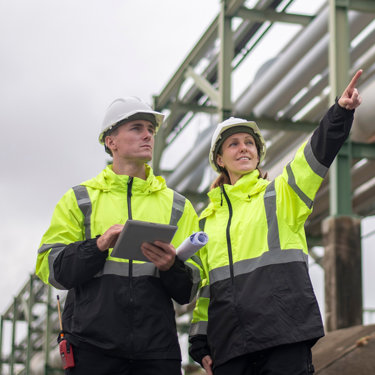What do the new red diesel rules mean for distributors?
Published: 3 May 2022
On April 1 2022, the Government changed the rules on who is eligible to use red diesel – with the aim of taxing most users of diesel more appropriately given the harmful emissions they produce.
Various sectors lost their entitlement: construction, plant hire, road maintenance, haulage and logistics, manufacturing, mining and quarrying, and commercial and backup power generation.
If you’re a distributor supplying any of these industries, you’re no doubt aware of the change in legislation. But have you fully considered what it will mean for your facilities and processes?
With fewer operations using red diesel, you’re going to need to store more white diesel to meet demand, and you’re going to have to be very careful not to contaminate any of your customers' white diesel tanks with red dye.
Let’s take a look at the implications and options available to you.
Option 1: Don’t change anything
You can decide to keep your depot as it is – but do consider that you will need to engage with your RDCO to alter your delivery schedule, so you can refill your white diesel stocks more regularly as demand increases.
Also be aware that white diesel is considerably more valuable (especially now) and is vulnerable to theft. You should consider additional security measures, such as CCTV monitoring, as well as spill response cover given that theft often also results in damage, careless handling, and spills.
Option 2: Repurpose some tanks from red to white diesel
To meet the change in demand, this is a sensible strategy, but you will need to ensure the tanks are fully cleaned prior to the grade change, as you cannot risk putting traces of red dye into a customer’s white diesel tanks.
You should engage with an environmental services partner to ensure your tanks are cleaned with 100% compliance and minimum disruption to your operations.
Option 3: Consolidate your red and white diesel in separate depots
To make operations more clear-cut, you might decide to separate your red and white diesel storage to entirely different depots, for a more focused distribution strategy and less risk of any cross-contamination.
A specialist environmental services provider can undertake the fuel uplift and transfer, cleaning and buyback in preparation.
Option 4: Increase your overall tank capacity
Another strategy is to increase your overall tank storage to accommodate the greater demand for white diesel.
Consult an expert in fuel infrastructure to advise on the new tank supply, undertake safe and compliant installation, and provide long-term maintenance.
Option 5: Install an injection system
One final option is to switch entirely to storing white diesel, but install an injection system to convert white to red diesel on demand, claiming back the tax.
This would require a specialist to install a fuel injection system and process at your depot.
Finding the right option for you
Whichever strategy you decide fits your operations, you’ll need to act swiftly. An upfront investment will ensure you keep up with the changing fuel demands of customers, avoid contaminating any white diesel stocks, and have adequate security measures in place.
With decades of experience in fuel handling and tank storage, in-depth expertise in the relevant legislation, and nationwide coverage, we can provide trusted advice and cutting-edge processes for all the options open to you.
More from our Knowledge Hub
 Case study
Case studyDecommissioning and redeveloping a mechanical transport fuel installation at Sennybridge Training Area
 News
NewsTwo prestigious wins at Water Industry Awards and Women in Utilities Awards 2025
 News
NewsCelebrating and supporting our veterans at the Forces in Business Awards 2025
 Insights
InsightsRebuilding trust in water: Interim recommendations from the Independent Water Commission
Environmental compliance today, creating a sustainable tomorrow
Helping you reduce risk to the environment and your operation by managing assets compliantly while achieving commercial, ESG, and net-zero goals.
Contact our experts
